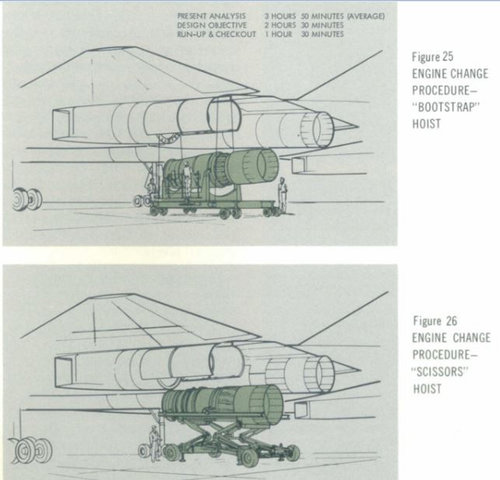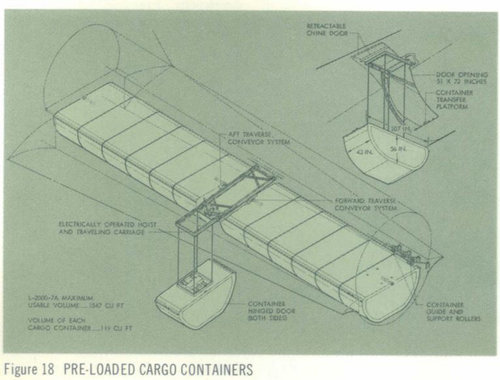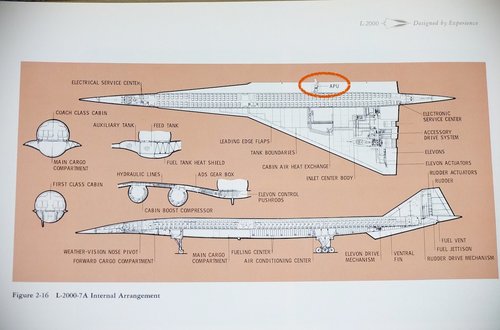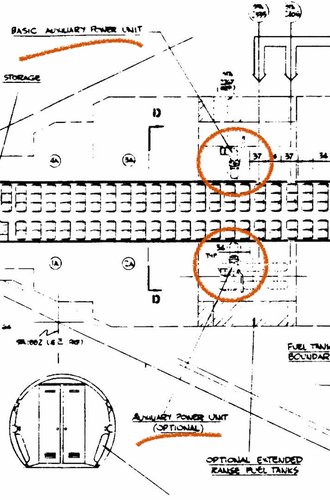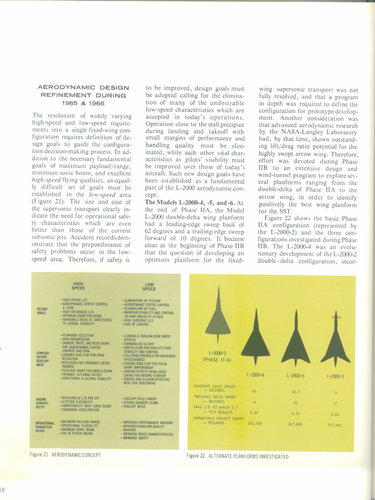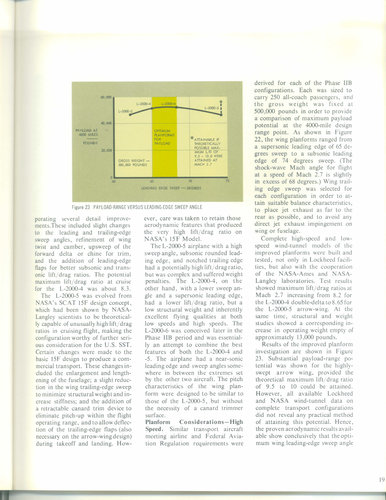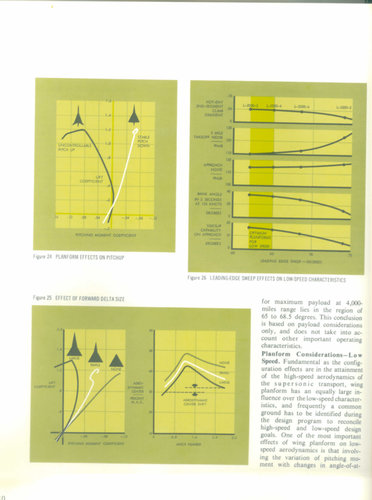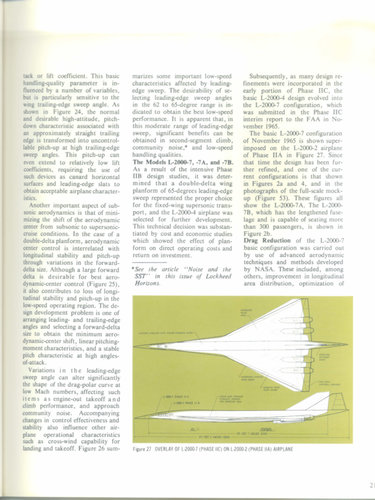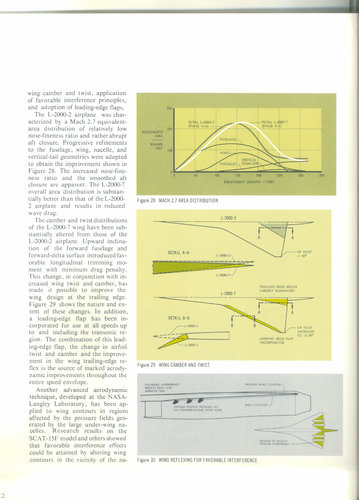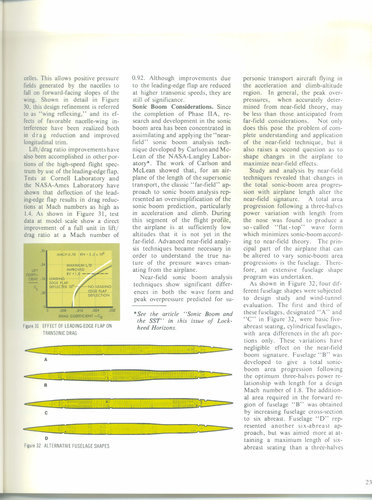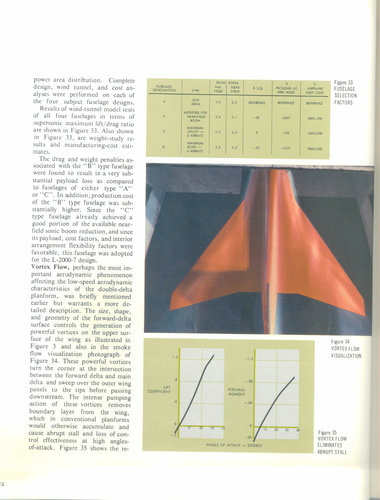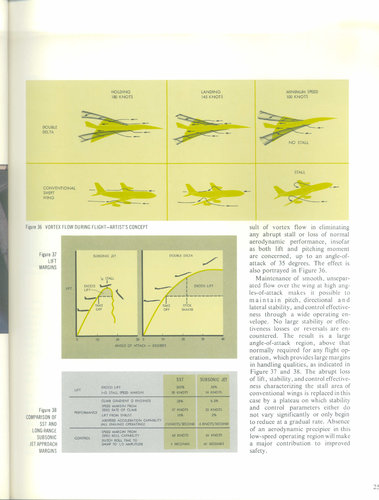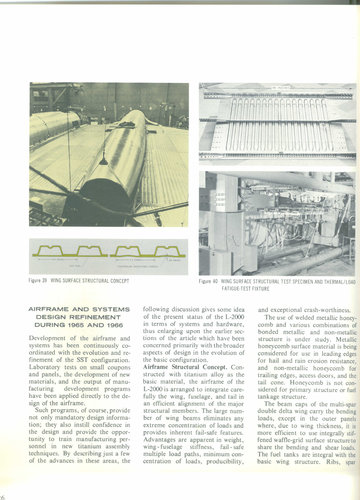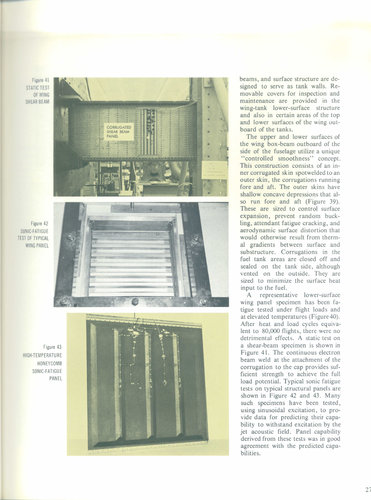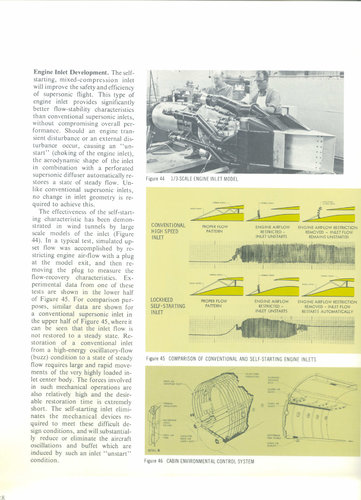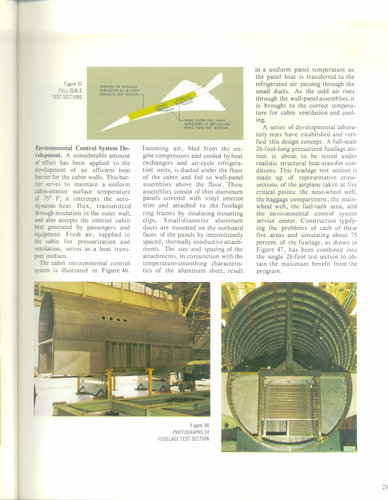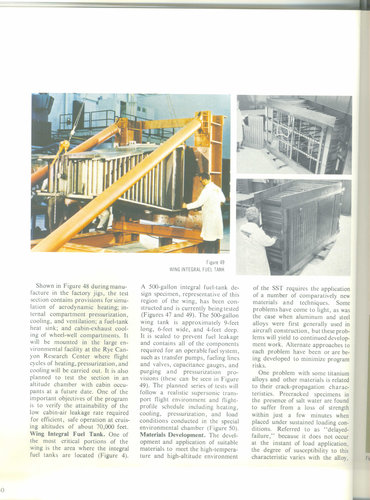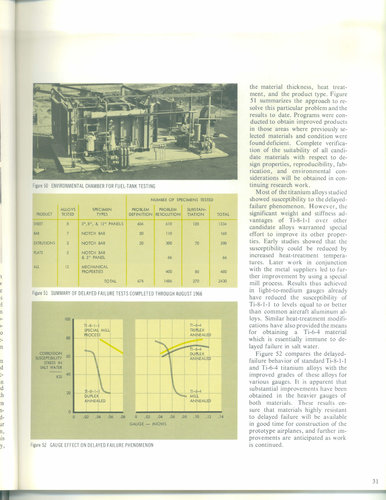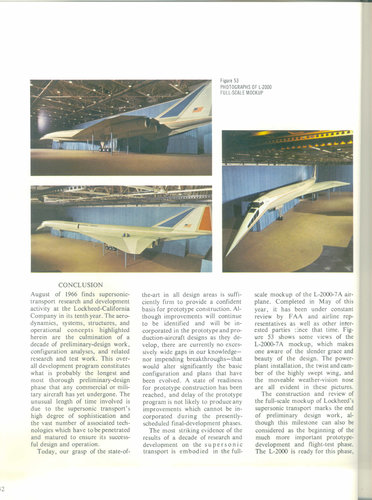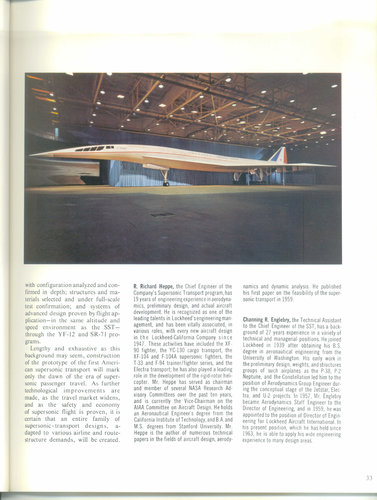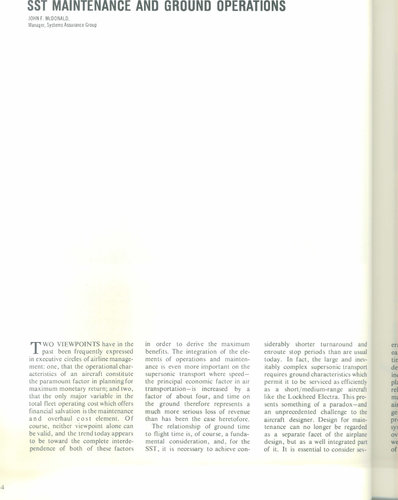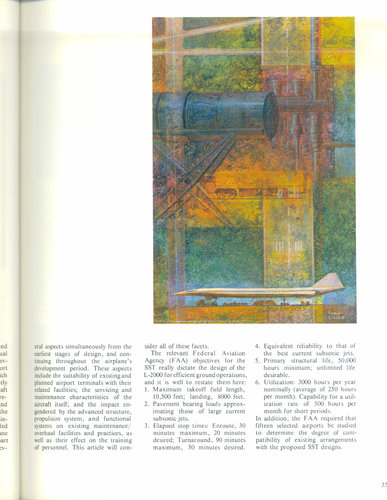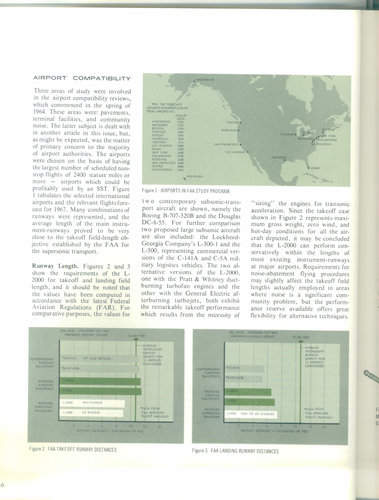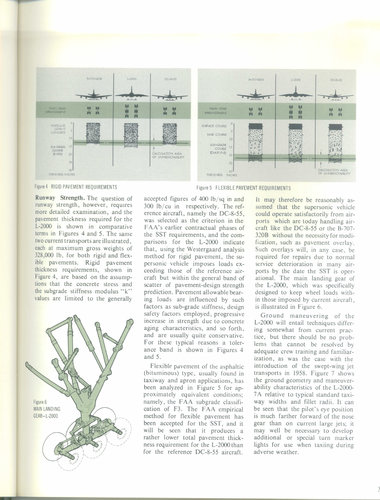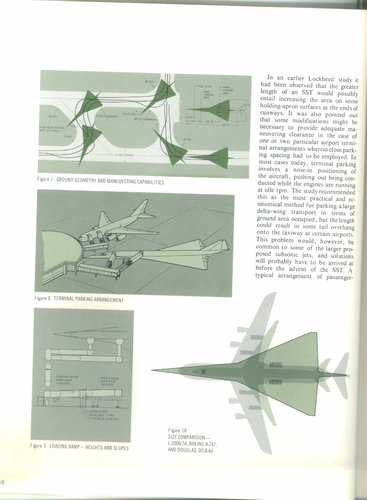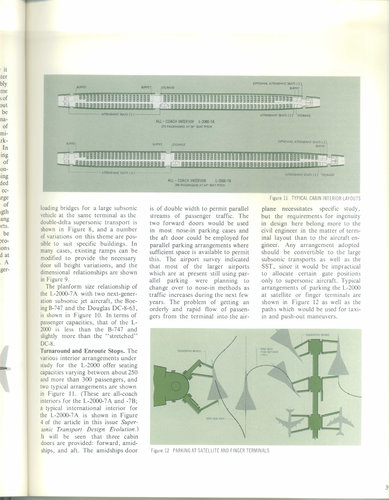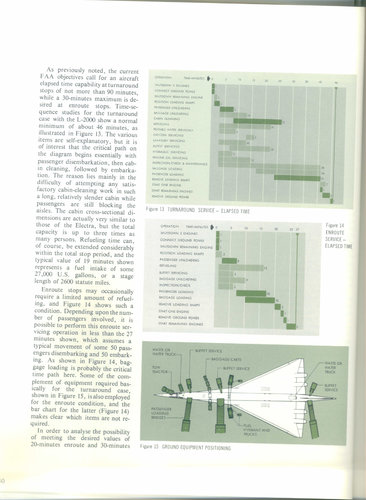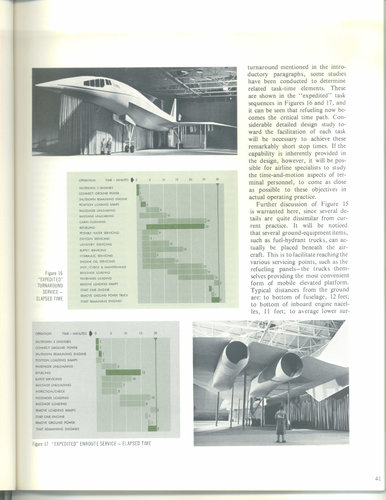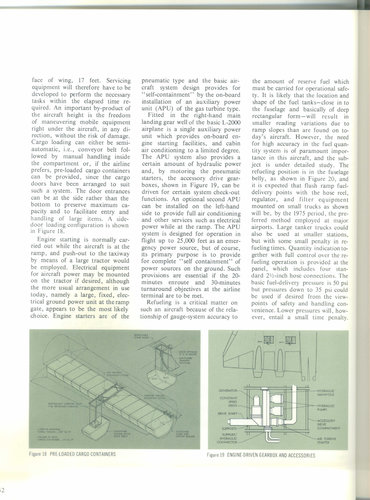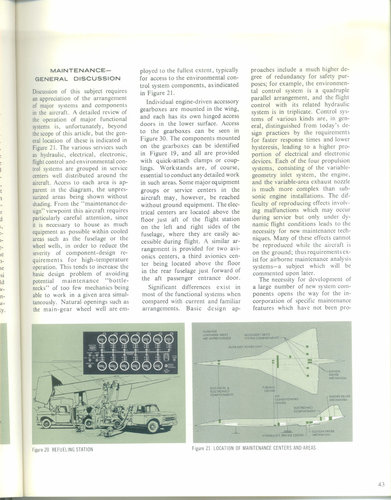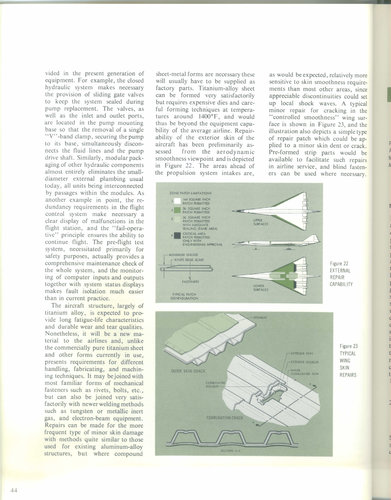A video tour inside the 2707-300 mockup nose and cockpit when it was still at the Hiller Aviation Museum :
You are using an out of date browser. It may not display this or other websites correctly.
You should upgrade or use an alternative browser.
You should upgrade or use an alternative browser.
US Supersonic Transport (SST) Program 1960-1971
- Thread starter Orionblamblam
- Start date
MaxLegroom
Why not?
- Joined
- 28 December 2013
- Messages
- 161
- Reaction score
- 49
That I will agree with, even as I have my favorites.
MaxLegroom
Why not?
- Joined
- 28 December 2013
- Messages
- 161
- Reaction score
- 49
If one of the moderators are paying attention...
If not, Happy Alcoholidays!
If not, Happy Alcoholidays!
- Joined
- 16 April 2008
- Messages
- 9,601
- Reaction score
- 14,474
It's interesting to me that the designers seem to have been looking to minimize the need for specialized ground support equipment, hence the built-in hoist for the cargo containers and the proposed "bootstrap" system for engine changes. But this aircraft would surely have been flying in and out of a limited number of airports where providing the necessary GSE would have been no problem. We even have other drawings here showing dedicated terminals with specialized jetways for boarding. Seems a bit schizophrenic.
It's interesting to me that the designers seem to have been looking to minimize the need for specialized ground support equipment, hence the built-in hoist for the cargo containers and the proposed "bootstrap" system for engine changes. But this aircraft would surely have been flying in and out of a limited number of airports where providing the necessary GSE would have been no problem. We even have other drawings here showing dedicated terminals with specialized jetways for boarding. Seems a bit schizophrenic.
Hi, Maybe I am misinterpreting your post but as pretty much all major hubs had to be substantially improved to deal with the arrival of the Jet, and then the Jumbo etc.
- Joined
- 16 April 2008
- Messages
- 9,601
- Reaction score
- 14,474
It's interesting to me that the designers seem to have been looking to minimize the need for specialized ground support equipment, hence the built-in hoist for the cargo containers and the proposed "bootstrap" system for engine changes. But this aircraft would surely have been flying in and out of a limited number of airports where providing the necessary GSE would have been no problem. We even have other drawings here showing dedicated terminals with specialized jetways for boarding. Seems a bit schizophrenic.
Hi, Maybe I am misinterpreting your post but as pretty much all major hubs had to be substantially improved to deal with the arrival of the Jet, and then the Jumbo etc.
Not exactly. I was noticing that some features like the self-loading cargo system or the built-in hoists for engine swaps would be most useful flying from an airport without dedicated support for the SST. But I would not expect an SST to fly to airports without dedicated support facilities.
Speaking of airports compatibilities , these are interesting :
Airport Suitability Report, Fifteen Majior Domestic U. S. Airports
and
Economic implications of a United States supersonic transport aircraft upon airports and enroute support services
Some extracts :


Funny the L-2000 needed much more work to be done on pavement.
Airport Suitability Report, Fifteen Majior Domestic U. S. Airports
and
Economic implications of a United States supersonic transport aircraft upon airports and enroute support services
Some extracts :
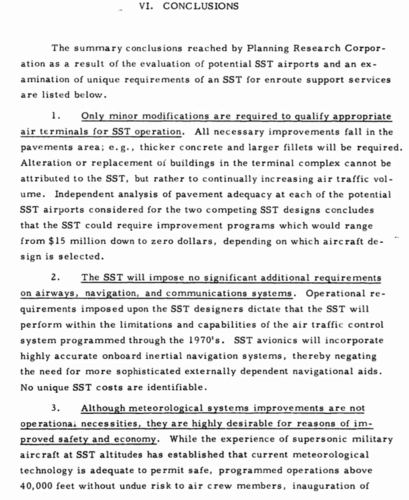
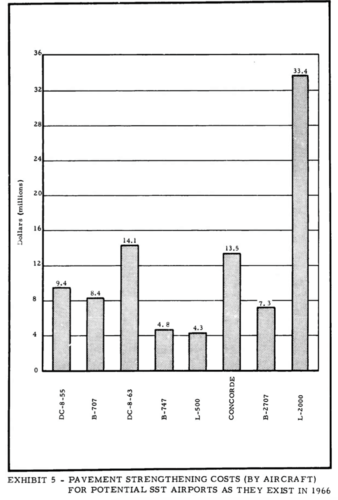
Funny the L-2000 needed much more work to be done on pavement.
- Joined
- 29 July 2009
- Messages
- 1,768
- Reaction score
- 2,467
Those costs are distributed across the 25 airports considered in the study to modify their runway, taxiway, and apron strength (study mentions that the weight and length of these new aircraft designs resulted in thicker overlays and increases in taxiway fillets or rounds). Consistently, the L-2000 required more money to strengthen the pavements than the other SST design (B-2707) or the high capacity Lockheed L-500 (which became the C-5A Galaxy) in all the airports considered.
Yes, that is what i understood too. More work on the runways/taxiways/pavements = more money.
What i found funny is that the Lockheed design required so much strengthening of the pavement compare to the other . Maybe weight concentrated on much smaller LG surface spots ?
What i found funny is that the Lockheed design required so much strengthening of the pavement compare to the other . Maybe weight concentrated on much smaller LG surface spots ?
Btw, found that this artwork :

is from Ralph McQuarrie, who did a lot of the concept arts for "StarWars" (the first ,good , ones) !
And later other films...

He was Artist and Preliminary Design Illustrator at the Boeing Company in the 1950’s and 1960’s.
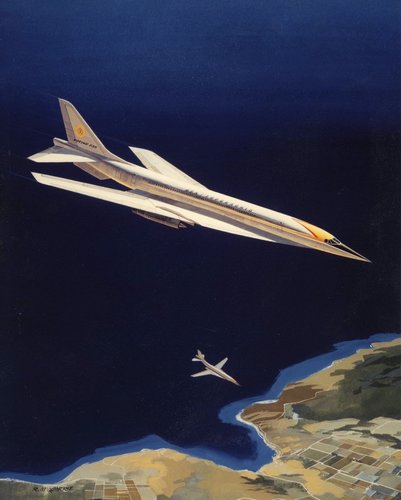
is from Ralph McQuarrie, who did a lot of the concept arts for "StarWars" (the first ,good , ones) !
And later other films...

He was Artist and Preliminary Design Illustrator at the Boeing Company in the 1950’s and 1960’s.
blackkite
Don't laugh, don't cry, don't even curse, but.....
- Joined
- 31 May 2007
- Messages
- 8,819
- Reaction score
- 7,692
Someone please explain this drawing. I can't understand this. APU, Generator, Gear box........?
View attachment 623848
View attachment 623848
Someone please explain this drawing. I can't understand this. APU, Generator, Gear box........?
View attachment 623848
I suppose it's engine-driven gearboxes that provides electrical and hydraulic power to the plane while engine running .
MaxLegroom
Why not?
- Joined
- 28 December 2013
- Messages
- 161
- Reaction score
- 49
I'd consider this likely. The 2707-200 had 16 main landing gear tires spread over four bogies, the L-2000 had twelve tires on just two. These figures were daunting to look at, but 33 million dollars spread over several facilities isn't all that much, really, even for that time, and part of that was to be spent on updating facilities for Super DC-8 models already on order.Yes, that is what i understood too. More work on the runways/taxiways/pavements = more money.
What i found funny is that the Lockheed design required so much strengthening of the pavement compare to the other . Maybe weight concentrated on much smaller LG surface spots ?
Boeing was considerate about this matter the 2707-300, if you note, has 24 main landing gear tires...
taildragger
You can count on me - I won a contest
- Joined
- 2 November 2008
- Messages
- 404
- Reaction score
- 502
Another downside to spreading the aircraft weight across all of those wheels and bogies is that more of the tires are scrubbed sideways across the ground during turns, accelerating their wear. Tire replacement is apparently a significant operating cost for airliners. Boeing addressed this on the 2707-200 by making the main gear legs steerable (at least 2 of them IIRC) and didn't use another 3-axle bogie until the 777, where the tire scrubbing is reduced by an articulated bogie.
The more i check about the Boeing SST designs , the more I think Boeing should have stuck with the 733-197 design... Or something of that size anyway.
taildragger
You can count on me - I won a contest
- Joined
- 2 November 2008
- Messages
- 404
- Reaction score
- 502
The 733 configuration was apparently abandoned because of impingement of the engine exhaust on the aft fuselage and horizontal tail, although it seems that B-1 gets away with a similar configuration. Perhaps the B-1 was expected to go supersonic so infrequently that the rate of accumulation of damage to the airframe was acceptable.The more i check about the Boeing SST designs , the more I think Boeing should have stuck with the 733-197 design... Or something of that size anyway.
blackkite
Don't laugh, don't cry, don't even curse, but.....
- Joined
- 31 May 2007
- Messages
- 8,819
- Reaction score
- 7,692
969-404's horizontal tail stabilizer droop like a F-4 shape when cruise to avoid exhaust gas.
Last edited:
- Joined
- 8 March 2009
- Messages
- 1,055
- Reaction score
- 1,293
The B-1b has its horizontal much higher and closer to the engines than the 733. This makes the angle much greater and thus less of an issue.
But all that is kinda mute as the 733-197 didn't have the pax capacity to be economical.
But all that is kinda mute as the 733-197 didn't have the pax capacity to be economical.
The 733 configuration was apparently abandoned because of impingement of the engine exhaust on the aft fuselage and horizontal tail, although it seems that B-1 gets away with a similar configuration. Perhaps the B-1 was expected to go supersonic so infrequently that the rate of accumulation of damage to the airframe was acceptable.The more i check about the Boeing SST designs , the more I think Boeing should have stuck with the 733-197 design... Or something of that size anyway.
Yes, But they did not found that tailplane burned by exhausts problem until the -290 apparently. Looking at a -197 plan, one can see the engines are lower than on the -290, maybe less interacting with the tailplane. Anyway we'll never know...
The B-1b has its horizontal much higher and closer to the engines than the 733. This makes the angle much greater and thus less of an issue.
But all that is kinda mute as the 733-197 didn't have the pax capacity to be economical.
So was the all program obviously (uneconomical). All i'm saying is a smaller plane would maybe have been at least technically feasible, instead of the latter (beautiful) monsters that were even less doable.
Last edited:
- Joined
- 8 March 2009
- Messages
- 1,055
- Reaction score
- 1,293
So was the all program obviously (uneconomical). All i'm saying is a smaller plane would maybe have been at least technically feasible, instead of the latter (beautiful) monsters that were even less doable.
iirc studies showed that ~250pax and mach 3 cruise was needed for airline profitability, which in turn would translate to orders and program profitability. Around then is when several of the competitors just dropped out, I think it was NAA who outright said that those targets were too ambitious. Boeing and Lockheed soldiered on and came up with massive airframes to meet those targets.
blackkite
Don't laugh, don't cry, don't even curse, but.....
- Joined
- 31 May 2007
- Messages
- 8,819
- Reaction score
- 7,692
I can see APU and ACCESSORY DRIVE SYSTEM COMPARTMENTS.
View attachment 624170
View attachment 624171
View attachment 624170
View attachment 624171
So was the all program obviously (uneconomical). All i'm saying is a smaller plane would maybe have been at least technically feasible, instead of the latter (beautiful) monsters that were even less doable.
iirc studies showed that ~250pax and mach 3 cruise was needed for airline profitability, which in turn would translate to orders and program profitability. Around then is when several of the competitors just dropped out, I think it was NAA who outright said that those targets were too ambitious. Boeing and Lockheed soldiered on and came up with massive airframes to meet those targets.
Mach 2.7 was picked because it allows to cross the Atlantic in two hours rather than three for Concorde (which all time record was 2h52). And this allow three daily rotations instead of two, everyday, between 6 in the morning and 23 in the evening.
Paris - NY
NY - Paris
6 - 8 - 1 hour cleaning and refueling
9 - 11 - 1 hour cleaning and refueling
12 - 14 - 1 hour cleaning and refueling
15 - 17 - 1 hour cleaning and refueling
18 - 20 - 1 hour cleaning and refueling
21 - 23
"Fuselage unshaded areas are unpresurized"... hum, I highly doubt te droop nose was presurized.I can see APU and ACCESSORY DRIVE SYSTEM COMPARTMENTS.
View attachment 624170
View attachment 624171
From which Horizon revue Nmr are all these nices drawing coming , please Blackkite San ?
Last edited:
blackkite
Don't laugh, don't cry, don't even curse, but.....
- Joined
- 31 May 2007
- Messages
- 8,819
- Reaction score
- 7,692
Hi galgot-san! I will up other pages.
- Joined
- 26 May 2006
- Messages
- 34,869
- Reaction score
- 15,733
To be continued.
Please,most of us kept and knew all Lockheed Horizons from long time ago,we need something new ?!.
jstar
ACCESS: Secret
- Joined
- 12 October 2007
- Messages
- 345
- Reaction score
- 424
Most. Not all.To be continued.
Please,most of us kept and knew all Lockheed Horizons from long time ago,we need something new ?!.
This is all new to me, please keep posting.
Similar threads
-
FLIGHTS OF FANTASY: The Lockheed L-2000 SST in airline service
- Started by Sentinel Chicken
- Replies: 9
-
Could the US have built an SST?
- Started by uk 75
- Replies: 35
-
-
-

